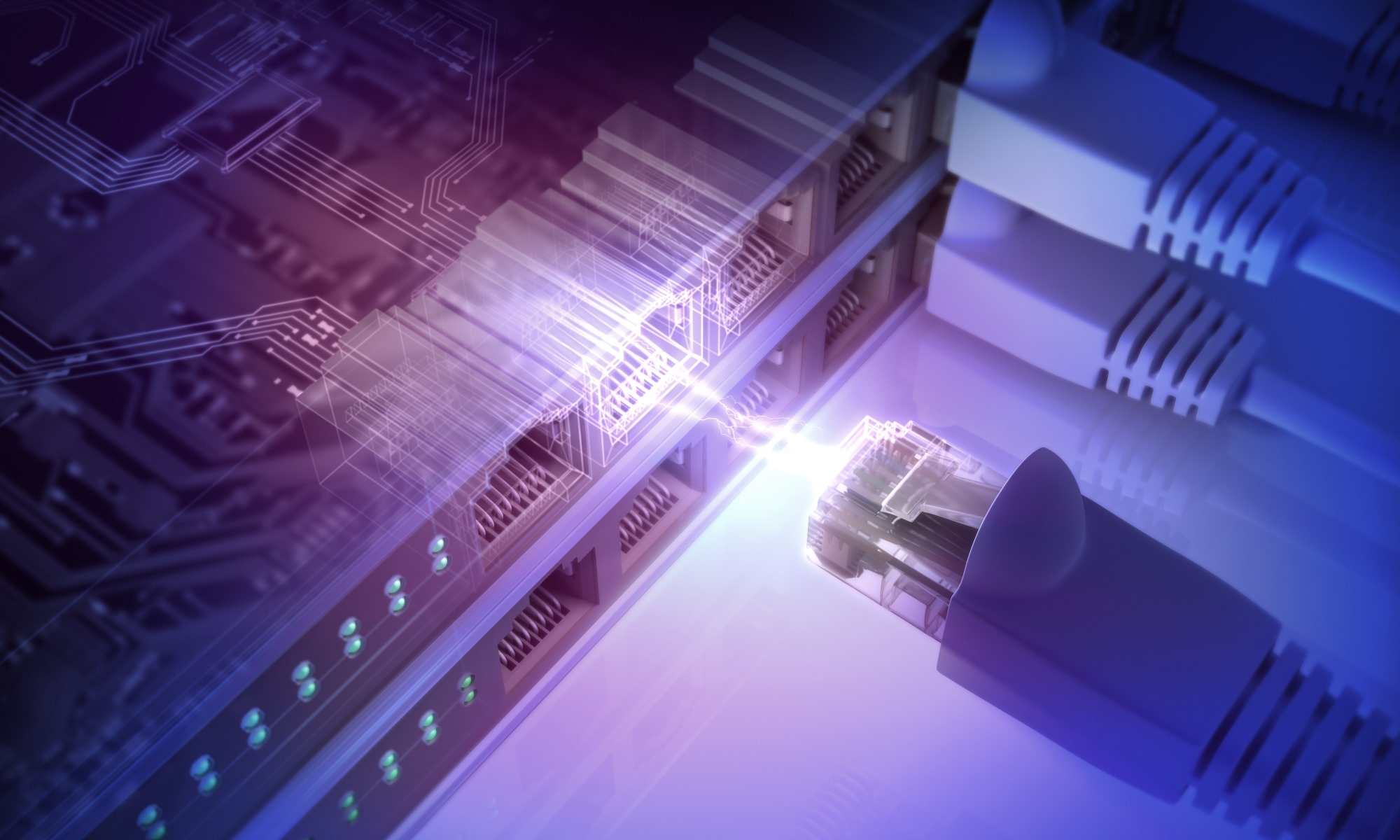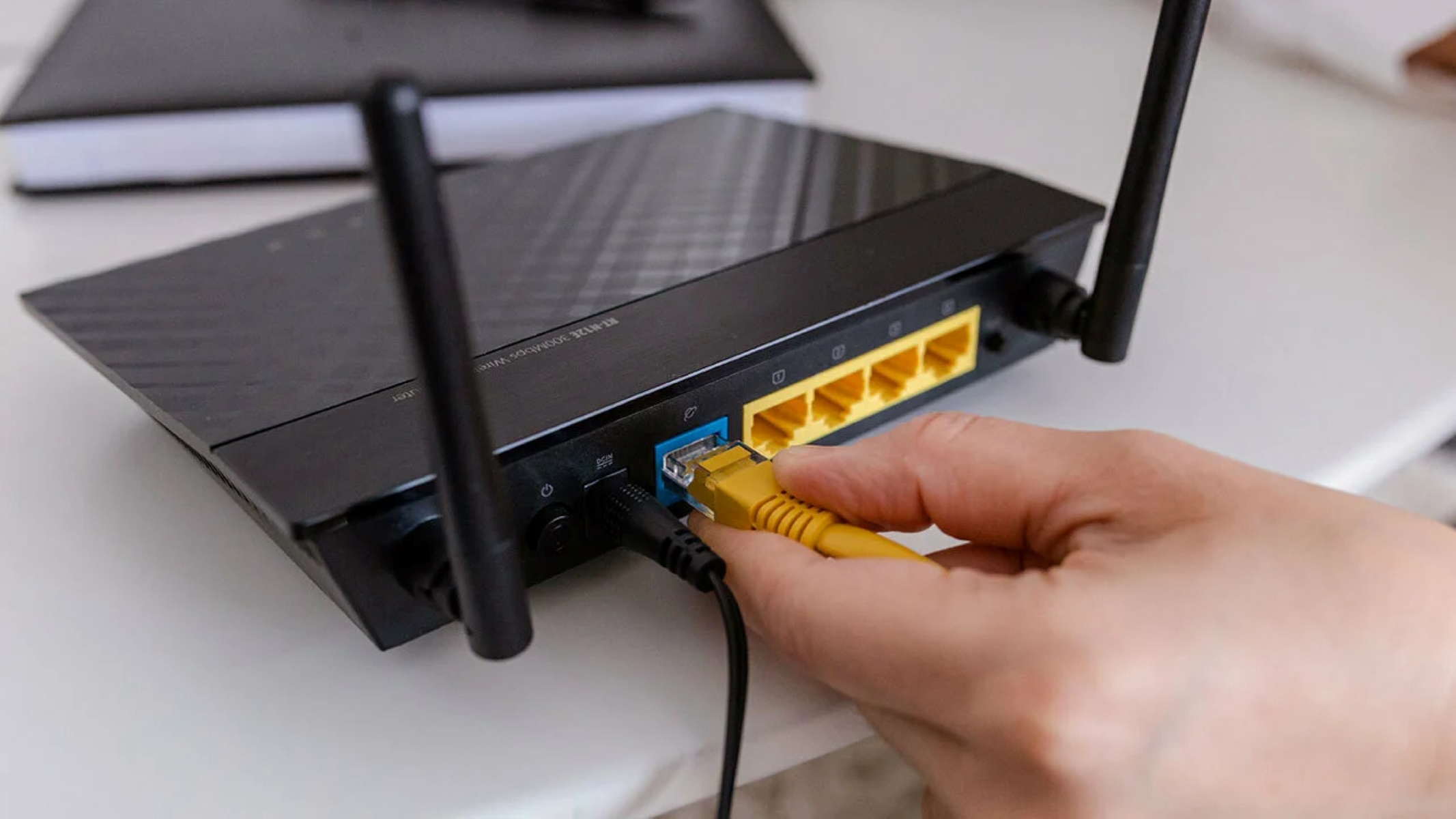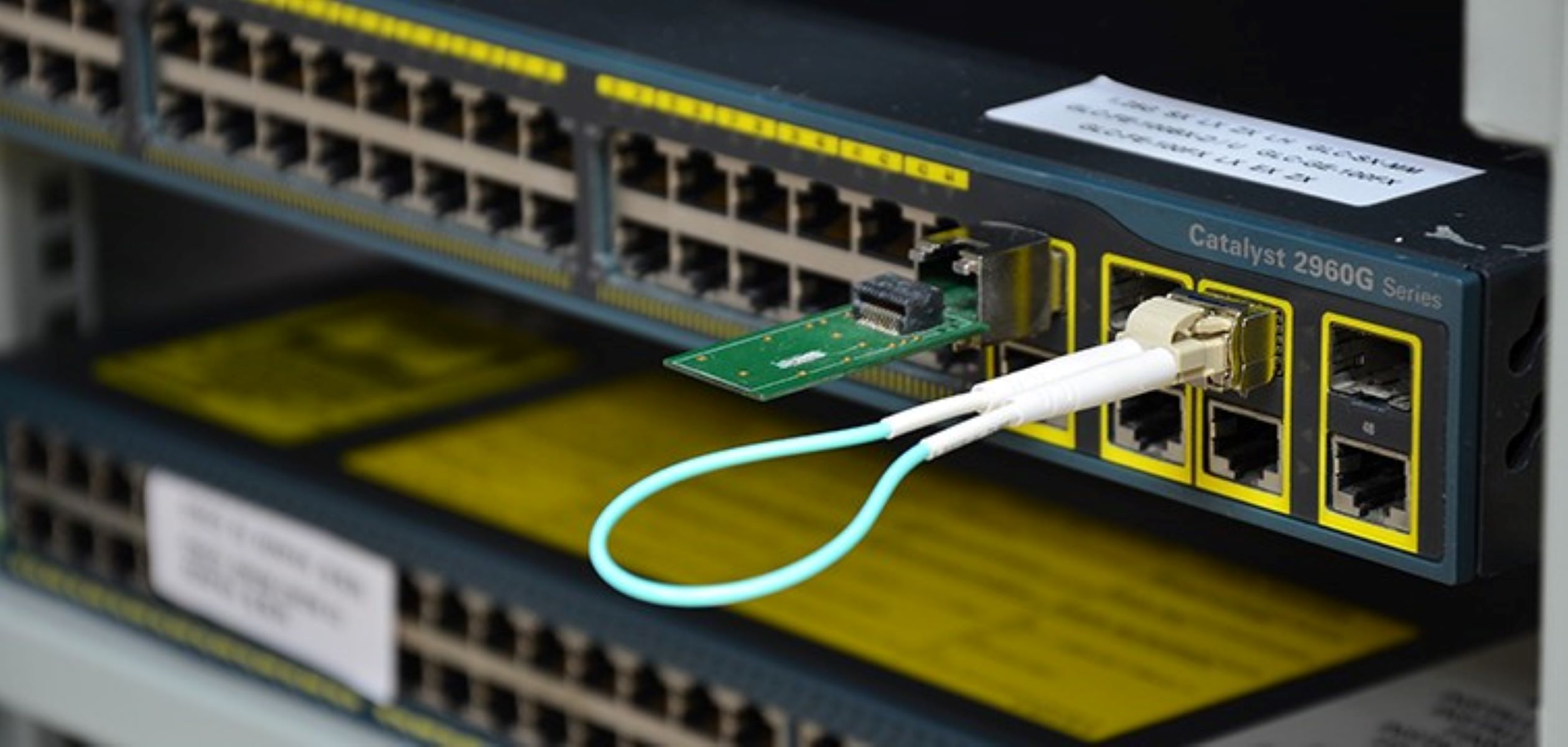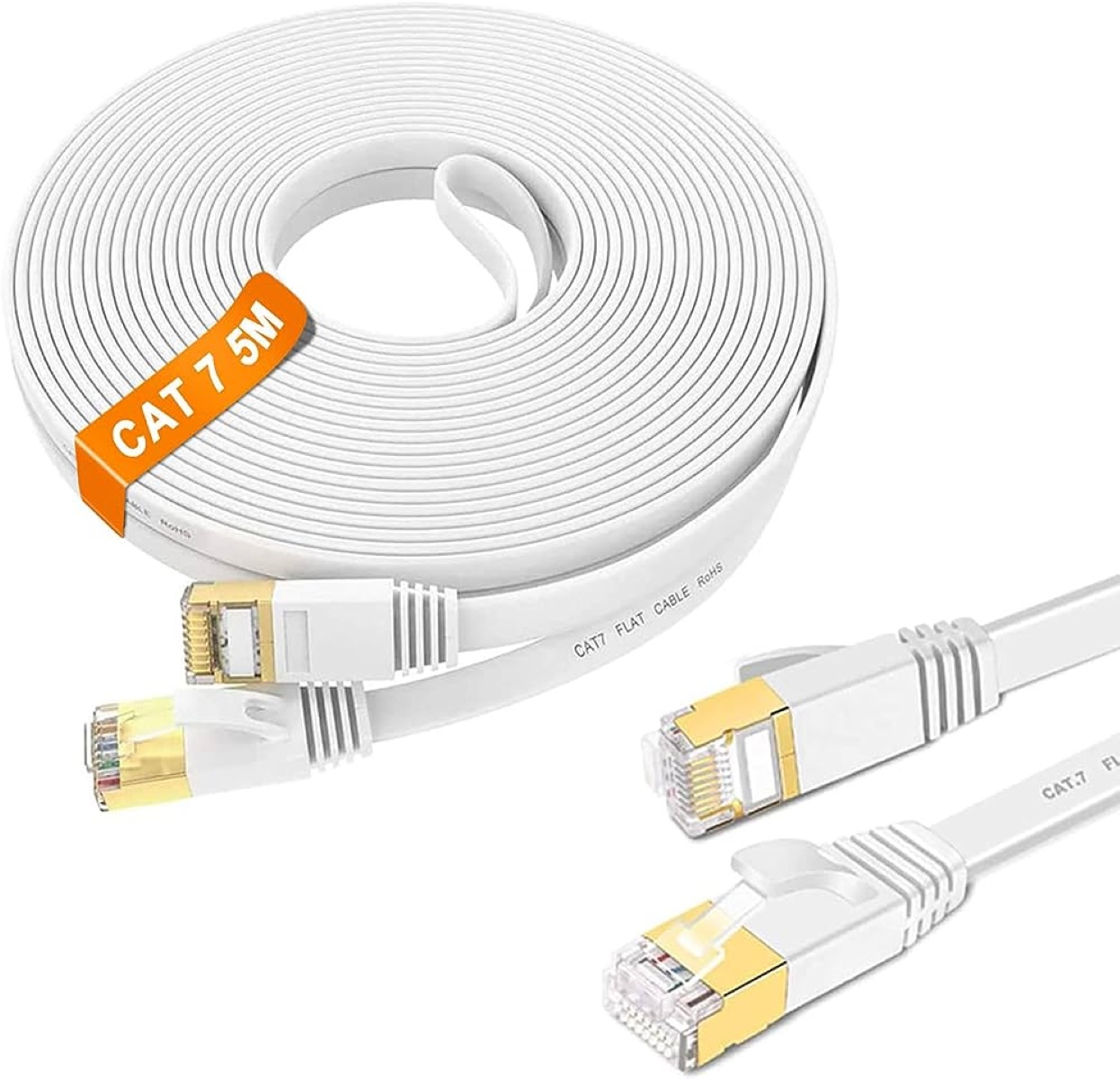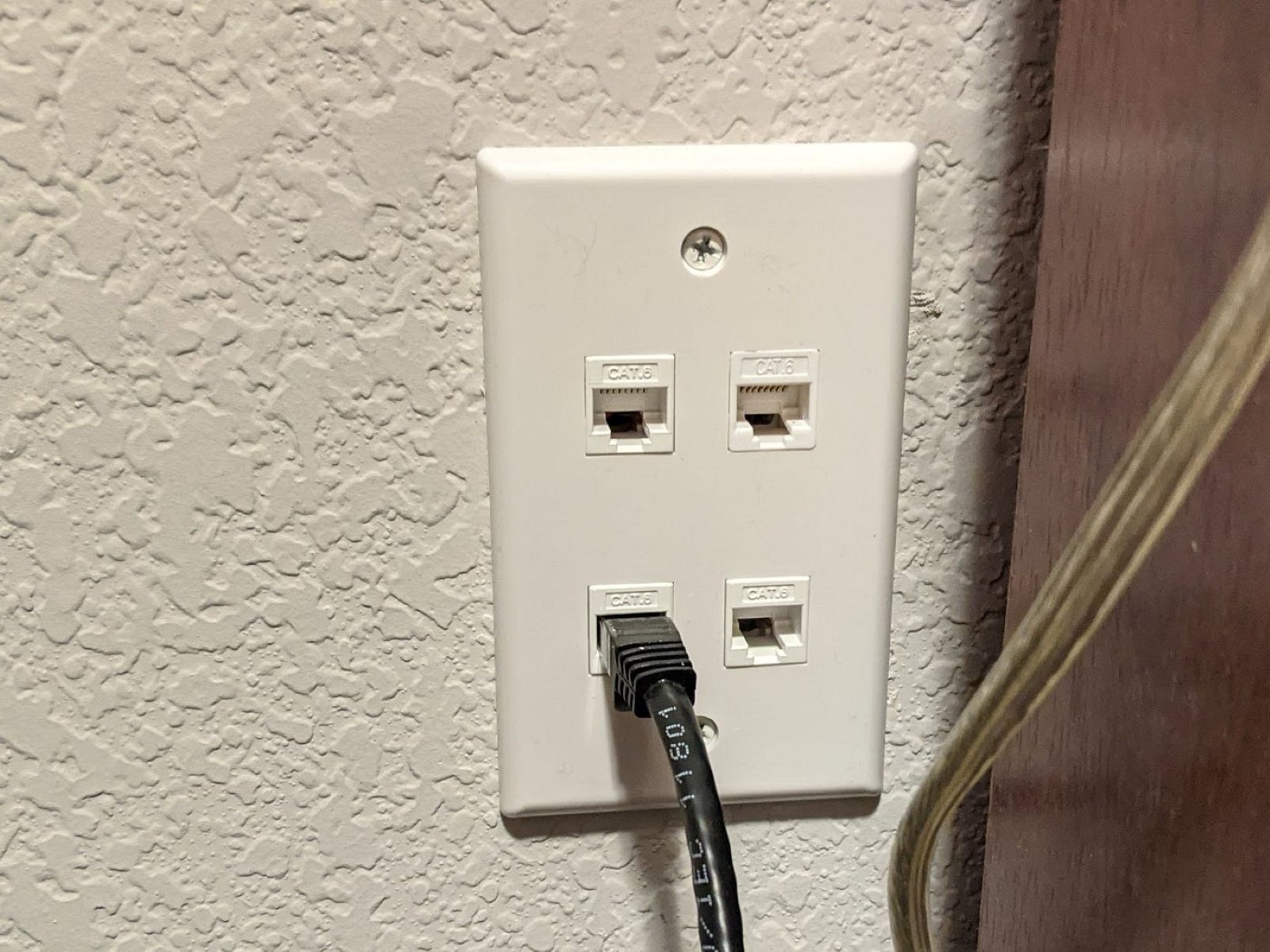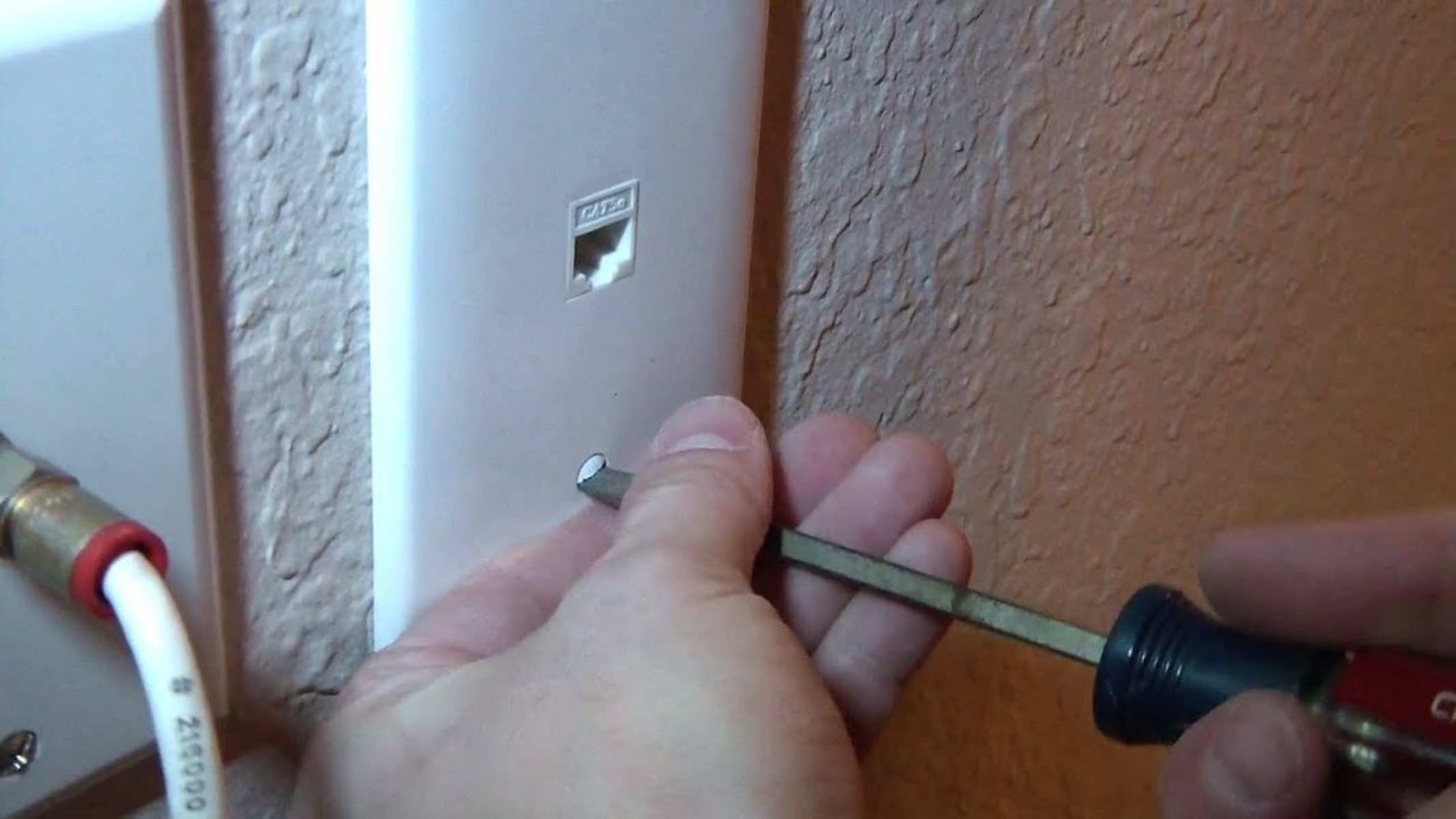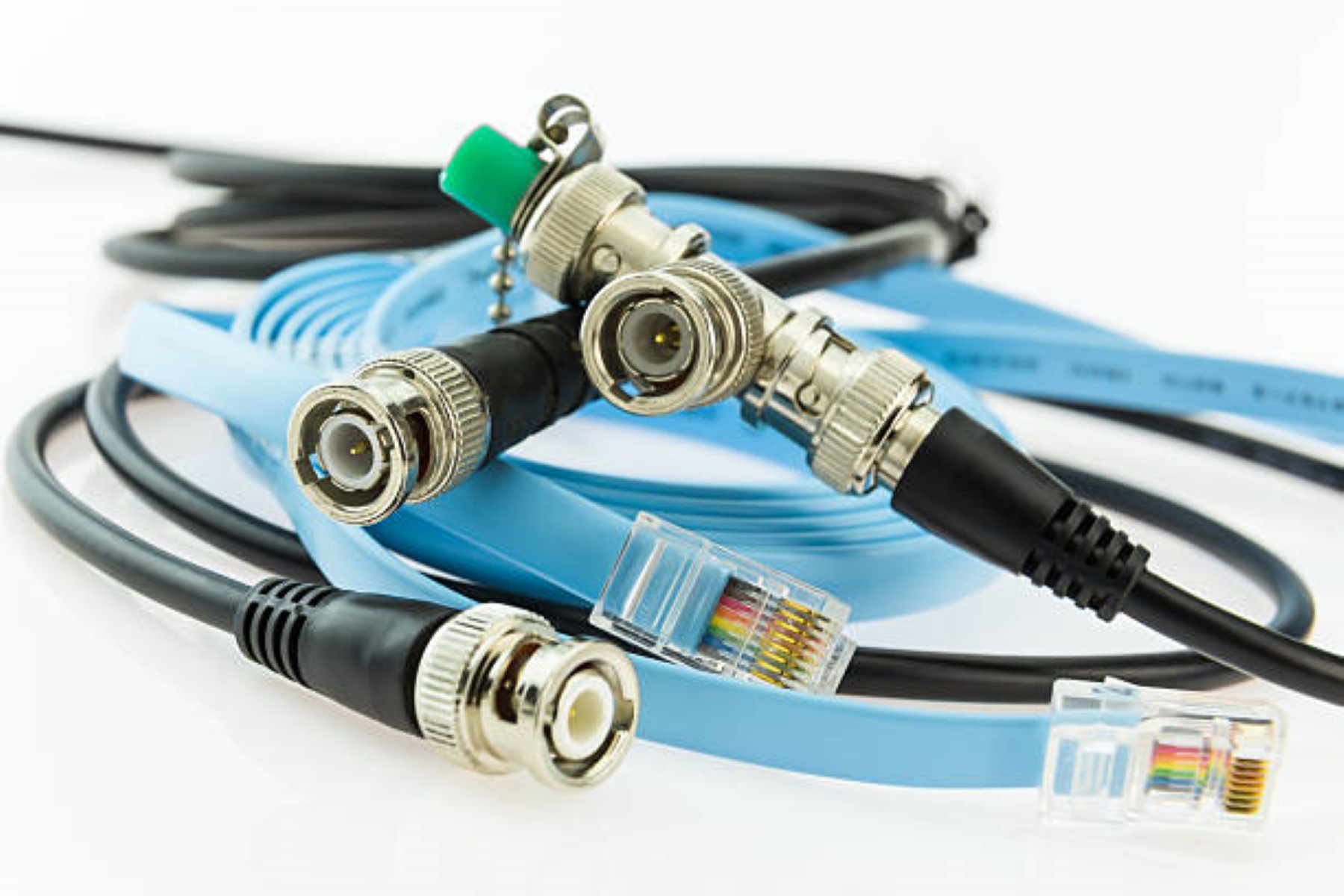Introduction
Welcome to the world of Ethernet cables, where high-speed and reliable internet connectivity seamlessly connects us to the digital realm. In today’s tech-savvy society, the importance of a stable and efficient internet connection cannot be overstated. Ethernet cables play a vital role in delivering fast and consistent internet access, making them an essential component of our modern digital infrastructure.
An Ethernet cable, also known as a network cable or LAN (Local Area Network) cable, is a type of cable specifically designed to transmit data between devices. It is the backbone of wired network connections, offering a reliable means of communication and data transfer between computers, routers, modems, and other network devices. By using Ethernet cables, we can establish a stable and secure network connection without relying on wireless signals.
With their versatile nature, Ethernet cables are used in various settings, including homes, offices, data centers, and educational institutions. These cables provide a reliable and high-speed connection that is essential for accessing the internet, transferring files, streaming media, online gaming, video conferencing, and other bandwidth-intensive tasks.
In this article, we will explore the different types of Ethernet cables available, delve into their features and functionalities, and discuss their primary uses. We will also highlight the benefits and advantages of Ethernet cables and provide useful tips for choosing the right cable for your specific needs. So, whether you are a tech enthusiast, a professional network administrator, or simply curious about the world of Ethernet cables, let’s dive in and uncover the wonders of this indispensable networking technology.
What is an Ethernet Cable?
An Ethernet cable is a type of cable specifically designed to connect devices within a Local Area Network (LAN). It is a physical medium used to transmit data between devices, such as computers, routers, switches, and modems. Ethernet cables are typically made up of twisted pairs of copper wires encased in a protective sheath to reduce interference and ensure reliable data transmission.
The Ethernet cable follows a set of standardized specifications defined by the Institute of Electrical and Electronics Engineers (IEEE). These specifications, known as Ethernet standards, determine the capabilities and performance of the cable, allowing for seamless communication between devices.
Ethernet cables are categorized based on different factors, such as the maximum data transmission speed they can support and the level of interference protection they provide. The most commonly used Ethernet cable categories include Cat5e, Cat6, Cat6a, and Cat7. Each category offers varying levels of speed, bandwidth, and reliability to meet different networking requirements.
One significant aspect of Ethernet cables is their connector types. The most widely used connector is the RJ-45 (Registered Jack-45), which resembles a wider version of a telephone plug. The RJ-45 connector plugs into the Ethernet port of devices, establishing a physical connection and enabling the transfer of data packets.
When an Ethernet cable is connected to a device, it forms a link in the network chain, allowing devices to send and receive data. These cables utilize a technique called “packet switching,” where data is divided into smaller packets and transmitted individually. The packets are then reassembled at the receiving end, ensuring efficient and error-free communication.
Ethernet cables are highly reliable due to their wired nature, which offers several advantages over wireless connections. Wired connections provide a stable and uninterrupted signal, eliminate the risk of interference from other electronic devices, and offer faster data transfer speeds compared to wireless alternatives.
In the next section, we will explore the inner workings of Ethernet cables and how they enable seamless communication between network devices.
How Does an Ethernet Cable Work?
Ethernet cables work by transmitting data through a combination of electrical signals and twisted pairs of copper wires. The cables are designed to provide a reliable and secure means of communication between devices within a network.
When a device, such as a computer or router, is connected to an Ethernet cable, it uses a technology called “Ethernet protocol” to communicate with other devices on the network. This protocol governs the rules and procedures for data transmission, ensuring that information is exchanged accurately and efficiently.
Inside an Ethernet cable, there are typically four pairs of copper wires that are twisted together. The twisting helps to reduce interference and crosstalk, which can degrade signal quality. Each pair is designated for transmitting and receiving data, allowing for simultaneous bidirectional communication.
When a device wants to send data, it encodes the information into electrical signals. These signals are then applied to the Transmit (Tx) wire pair of the Ethernet cable. At the receiving end, another device detects these signals from the Receive (Rx) wire pair, decodes them, and processes the data.
The Ethernet protocol divides data into smaller units called “packets” before transmitting them. Each packet contains a header with important information, such as the source and destination addresses, and the payload, which is the actual data being sent. By dividing data into packets, Ethernet cables ensure efficient transmission and enable error detection and correction.
As the packets traverse the Ethernet cable, they encounter devices such as switches, routers, and hubs that help direct the data to its intended destination. These devices examine the destination address of each packet and forward them accordingly, ensuring that the data reaches the correct device within the network.
Once the data packets have reached their destination, they are reassembled into the original data form. This process involves checking for errors and ensuring the integrity of the transmitted data. If any errors are detected, the receiving device may request the transmitter to resend the affected packets.
Ethernet cables are capable of handling various data transmission speeds, ranging from 10 Mbps (megabits per second) to even 100 Gbps (gigabits per second) or more, depending on the category of the cable and the capabilities of the connected devices. The speed and performance of the Ethernet cable can impact the overall network performance, making it essential to choose the right cable for the intended applications.
In the next section, we will explore the different types of Ethernet cables available and their specific features and functionalities.
Different Types of Ethernet Cables
Ethernet cables come in different types, each designed to meet specific needs and provide different levels of performance. The most commonly used types include Cat5e, Cat6, Cat6a, and Cat7 cables. Let’s explore each of these types in detail:
- Cat5e Cable: Cat5e (Category 5e) Ethernet cables are the most basic type commonly used for residential and small office networks. They can support speeds of up to 1,000 Mbps (1 Gbps) and have a maximum bandwidth of 100 MHz. Cat5e cables are capable of transmitting data over a distance of up to 100 meters.
- Cat6 Cable: Cat6 (Category 6) cables offer higher performance compared to Cat5e cables. They are designed to support speeds of up to 10 Gbps and have a maximum bandwidth of 250 MHz. Cat6 cables are backward compatible with Cat5e cables, making them a popular choice for home networks, offices, and gaming setups.
- Cat6a Cable: Cat6a (Category 6a) cables are an enhanced version of Cat6 cables. They are specifically designed to support 10 Gbps speeds over longer distances compared to Cat6 cables. Cat6a cables have a larger gauge size, better insulation, and more stringent specifications, allowing for transmission distances of up to 100 meters with reduced crosstalk and interference.
- Cat7 Cable: Cat7 (Category 7) cables offer the highest performance among the commonly used Ethernet cables. They are designed to support speeds of up to 10 Gbps and have a maximum bandwidth of 600 MHz. Cat7 cables feature individual shielding for each twisted pair, providing superior protection against crosstalk and electromagnetic interference. These cables are typically used in professional settings where maximum performance and reliability are required.
It’s important to note that the performance of an Ethernet cable is also influenced by other factors, such as the quality of the connectors, the network equipment being used, and the overall network setup.
When deciding which type of Ethernet cable to use, consider factors such as the required data transmission speed, the distance between the devices, and the level of interference in the environment. If you’re unsure, it’s always a good idea to consult with a network professional or refer to the equipment manufacturer’s recommendations.
Now that we’ve explored the different types of Ethernet cables, let’s move on to the next section where we’ll discuss the various uses and applications of Ethernet cables.
What Are Ethernet Cables Used For?
Ethernet cables play a crucial role in connecting devices within a network and enabling the transmission of data. They are widely used in various applications and settings for both residential and commercial purposes. Here are some common uses of Ethernet cables:
- Internet Connectivity: One of the primary uses of Ethernet cables is to establish a wired internet connection. By connecting a modem or router to a computer or other network-enabled devices using an Ethernet cable, users can access the internet with a stable and reliable connection. This is especially important for activities that require high-speed and uninterrupted internet access, such as streaming media, online gaming, video conferencing, and downloading large files.
- Local Area Networks (LANs): Ethernet cables are the backbone of LANs, connecting devices within a limited area such as homes, offices, or schools. They facilitate communication between computers, printers, servers, switches, and other network devices. Ethernet cables allow for the sharing of resources, such as files and printers, and enable seamless data transfer between devices on the network.
- Business Networks: In a business or enterprise environment, Ethernet cables are essential for creating and maintaining a reliable and secure network infrastructure. They are used to connect workstations, servers, and other network devices, ensuring efficient communication and data transfer within the organization. Businesses rely on Ethernet cables to support critical operations, facilitate collaboration among employees, and connect to the internet and other external networks.
- Data Centers: Data centers, which house a large number of servers and network equipment, heavily rely on Ethernet cables for high-speed and reliable connectivity. These cables connect servers, switches, storage devices, and other components, enabling data to flow seamlessly between them. Ethernet cables play a vital role in supporting the massive amounts of data processing and storage that data centers require.
- Security Systems: Ethernet cables are used in security systems to connect IP-based surveillance cameras, access control systems, and other security devices to the network. By using Ethernet cables, security footage can be transmitted to a central monitoring station or stored on network-attached storage devices. This allows for remote monitoring and easy access to video footage for surveillance and investigation purposes.
The versatility and reliability of Ethernet cables make them suitable for a wide range of applications. They are an essential component of modern networking, enabling the seamless exchange of data and supporting various wired network connections.
Now that we have explored the uses of Ethernet cables, let’s move on to the next section where we will discuss the benefits and advantages of using Ethernet cables over wireless connections in certain scenarios.
Benefits and Advantages of Ethernet Cables
Ethernet cables offer numerous benefits and advantages over wireless connections in certain scenarios. While wireless technologies have their place, there are several reasons why Ethernet cables are still widely used and preferred in many applications. Here are some of the key benefits:
- Stability and Reliability: Ethernet cables provide a stable and reliable network connection. Unlike wireless connections that can be susceptible to interference from other electronic devices or physical obstacles, Ethernet cables offer a more consistent and predictable connection. This is particularly important for activities that require a steady and uninterrupted data flow, such as online gaming, streaming media, and video conferencing.
- Speed and Bandwidth: Ethernet cables are capable of supporting high-speed data transfer rates. Depending on the category of the cable, speeds can range from 1 Gbps (Gigabit per second) up to 100 Gbps or more. This allows for faster downloads, uploads, and overall improved performance, especially when dealing with large files or data-intensive applications.
- Security: Wired connections offer enhanced security compared to wireless connections. Ethernet cables transmit data through physical connections, making it harder for unauthorized users to intercept the data. This is particularly important for sensitive information, such as financial transactions or confidential business data.
- Reduced Latency: Ethernet cables provide low latency, which refers to the delay in data transmission. For applications where real-time communication is critical, such as online gaming or video conferencing, low latency is essential to ensure smooth and responsive interactions. Ethernet cables offer lower latency compared to wireless connections, resulting in a more seamless and immersive experience.
- Less Interference: Ethernet cables are not affected by interference from other electronic devices or external factors that can disrupt wireless signals. This makes them particularly suitable for environments with high levels of interference, such as crowded offices or areas with a significant number of wireless devices in close proximity.
- Scalability and Flexibility: Ethernet cables provide flexibility in network setup and expansion. They allow for the creation of complex networks with multiple interconnected devices and can be easily expanded by adding more cables and network switches. Ethernet cables also support Power over Ethernet (PoE) technology, which enables the transmission of power and data over a single cable, simplifying the installation of network devices such as IP cameras or wireless access points.
While wireless connections have their advantages, Ethernet cables retain a significant edge in terms of stability, speed, security, and reliability. They are the go-to choice for situations where a stable and high-performance network connection is essential.
Now, let’s move on to the next section, where we will discuss the factors that should be considered when selecting an Ethernet cable.
Factors to Consider When Choosing an Ethernet Cable
Choosing the right Ethernet cable is crucial for ensuring optimal performance and compatibility with your specific networking needs. There are several key factors to consider when selecting an Ethernet cable:
- Speed and Bandwidth: Determine the speed requirements of your network. Different Ethernet cable categories support varying data transmission speeds. For example, Cat5e cables support speeds up to 1 Gbps, while Cat6 and higher categories can handle speeds of 10 Gbps and beyond. Ensure that the cable you choose can support the desired speed for your applications.
- Distance: Consider the distance between the devices you need to connect. Different Ethernet cable categories have specified distance limitations. Cat5e and Cat6 cables can generally transmit data up to 100 meters, while Cat6a and Cat7 cables can reach the same distance with better performance and reduced crosstalk.
- Category and Standards: Understand the different Ethernet cable categories and their corresponding standards. Each category has specific performance characteristics and capabilities. Ensure that the cable you choose meets the required standards for your network setup and desired performance level.
- Crosstalk and Interference: Evaluate the level of interference in your environment. If you anticipate high levels of interference from other electronic devices or physical obstacles, consider choosing a higher category cable with better shielding, such as Cat6a or Cat7, to minimize crosstalk and ensure reliable data transmission.
- Future-Proofing: Consider your future needs and potential network upgrades. Choosing a higher category cable, even if your current requirements don’t necessitate it, can provide room for expansion and future-proof your network infrastructure. This can save you from having to upgrade the cables later on.
- Cost and Budget: Evaluate your budget and consider the cost of the Ethernet cable. Higher category cables generally come at a higher cost, so weigh the benefits and requirements against your budget limitations. Remember to factor in the long-term benefits and potential savings that may arise from a higher-performance cable.
It’s also essential to ensure that the Ethernet cable you choose is compatible with your network devices and connectors. Most Ethernet cables use the standard RJ-45 connector, but it’s always a good practice to verify compatibility to avoid any connectivity issues.
Lastly, consider consulting with a professional or seeking advice from reputable sources to ensure you select the right Ethernet cable for your specific needs.
In the next section, we will conclude our discussion and summarize the key points covered in this article.
Conclusion
Ethernet cables are the backbone of wired network connections, providing stable, reliable, and high-speed connectivity for a wide range of applications. In this article, we have explored the world of Ethernet cables, discussing their definition, functionality, different types, as well as their uses and advantages.
We learned that Ethernet cables are specifically designed to transmit data between devices within a network, using electrical signals and twisted pairs of copper wires. They come in various categories, such as Cat5e, Cat6, Cat6a, and Cat7, each offering different speeds, bandwidths, and performance levels.
Ethernet cables find their applications in various settings, including homes, offices, data centers, and security systems. They are widely used for internet connectivity, creating local area networks (LANs), supporting business networks, and connecting devices in data centers and security systems.
When choosing an Ethernet cable, it’s crucial to consider factors such as speed, distance, category, crosstalk, future-proofing, and budget. By selecting the appropriate cable, you can ensure optimal performance and compatibility with your specific networking needs.
In summary, Ethernet cables offer several advantages over wireless connections, including stability, speed, security, and reduced interference. They are essential for activities that require a reliable and high-performance network connection.
Whether you’re a home user, a small business owner, or a network administrator, understanding Ethernet cables and their applications can help you make informed decisions when it comes to establishing a robust and efficient network infrastructure.
We hope this article has provided valuable insights into the world of Ethernet cables, helping you navigate through the various options available and empowering you to make the right choice for your networking needs.







